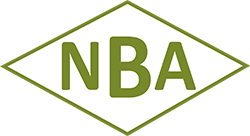Planning and Prevention to Improve Profitability
6th March 2015
Region: National
In this the third guide being published, by The National Beef Association (NBA) to help farmers protect the Health of their Herd, Charlie Maclaren Chair of the NBA’s Animal Health Committee Looks at Planning and Prevention.
These guides compiled by the NBA’s Animal Health Committee, aim to provide beef farmers with information about common health problems, and to date have covered movement of stock and bio-security planning.
The NBA Animal Health Committee, which was put together late last year, provides beef farmers with information about common health problems and their potential financial impacts on beef enterprises.
Losses caused by disease represent a major obstacle to the profitability of many cow/calf beef operations. Disease results in animal death, failure or decreased efficiency in reproduction, and decreases in growth and productivity. Some diseases exist at “subclinical levels,” meaning signs are not observable so losses continue undetected.
It is widely agreed that PREVENTION rather than TREATMENT is the most economical approach to keeping disease losses low.
Treatment of a disease after its onset is not always effective and is often costly. Production losses often occur before diagnosis and treatment can be instituted. Herd health programs are designed to provide routine, planned procedures which will prevent or minimise disease.
Many herd health programs fail in their objectives because too much reliance is put on vaccinations and other treatments. A comprehensive herd health program recognises vaccination as an important tool, but not a cure all. Effective programs integrate medicine and management to prevent disease.
There are three major factors which should be considered in attempting to keep disease losses to a minimum.
1. Prevent Exposure to Disease
Purchase and quarantine procedures should be employed to decrease the likelihood of disease introduction into the existing herd. In high intensity operations, increasing confinement means increasing exposure to disease-causing organisms that exist in all groups of animals. Such operations need more intensive preventive programs.
2. Keep Disease Resistance High
Nutrition, management, and housing programs should be designed to keep resistance to disease high at all times. Preventing or minimizing animal stress is a necessity for maintaining good resistance. In addition to these measures, resistance to specific diseases can sometimes be accomplished by vaccination.
3. If Disease Occurs, Prevent its Spread
Segregate affected animals immediately. Have a diagnosis made, and take recommended action as soon as possible.
Herd health programs must be tailored to each individual production situation. Performance of procedures should be grouped because cattle handling is expensive, time consuming, and stressful to cattle. In some cases, the cost of performing a procedure may outweigh the benefits gained. Every procedure should be evaluated in terms of its potential to be cost-beneficial.
Vets can be of tremendous help in establishing and maintaining health programs. They keep current with new developments in disease occurrence and in procedures available to prevent and treat diseases. Knowledge and experience enable them to help tailor programs that are based on the goals, capabilities, and situations present on given farms.
ENDS
Media Enquiries – Glendale PR – 01668 283044 – [email protected]
Chris Mallon Chief Executive – 01434 601 005 – [email protected]
National Beef Association, Mart Centre, Tyne Green, Hexham – 01434601005, [email protected] www.nationalbeefassociation.com

